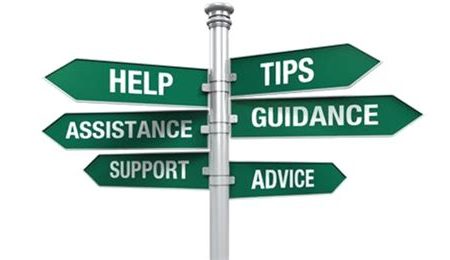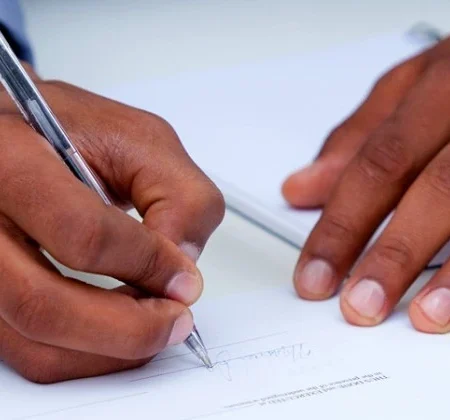20 PowerPoint Preparation Tips for Masters and PhD Students
The Do and Don’t of designing a simple and powerful PowerPoint slide.
#1. Use High-Quality, Fresh Templates
Choosing a beautiful and fresh template for your PowerPoint is Gold. Avoid using an old and outdated template. Templates can be distracting if they’re too basic or if the design feels dated. You need one with great design options.
#2. Don’t Use Flashy Slide Transitions
Slide transitions are cool when manipulating your Design PowerPoint at home, however, we do not encourage you to use them during a presentation. If you want to use transitions, make sure you use simple and basic type, avoid flashy transitions on the slide as they are just a distraction to you and your audience.
#3. Keep Your PowerPoint Slides Simple
Keep your slide very simple when designing your PowerPoint. Do not overcrowd with much wordings. A cluttered slide is distracting. It confuses an audience, as they get to ask themselves,
Which part of the slide should I focus on?
Should I read the slide or pay attention to the presenter?
Do not put your audience in the position to choose reading from the slide or to try to follow up with you as you present. Let there be a flow in your presentation.
#4. Limit Number of Words on Slides
The overall goal of a PowerPoint presentation is for your audience to be listening and looking at your every gesture not reading from your slide. Avoid covering too many words on a slide. If possible, avoid bullets altogether. Otherwise, minimize them to just a few simple words. The audience should be listening, not reading.
#5. Choose Appropriate Fonts
Fonts are an important part of engaging your audience. Fonts and typography choices have a subconscious effect on viewers, causing them to characterize your company’s presentation and brand either positively or negatively. Make sure that you’re choosing fonts that are professional and modern! The most generally acceptable font size is 28 for text and 32 for headings
#6. Use High-Quality Photos and Graphics
One of the most significant tips for professional PowerPoint presentations is the use of high-quality images and graphics. Avoid blur and unclear images.
#7. Use Accurate and Relevant Charts and Graphs
Charts and graphs can also be distracted if they’re not used correctly. Make sure the information design is clean and tidy so that the viewer doesn’t waste all the time trying to find out what your X-axis means.
#8. Make Sure All Objects Are Aligned
A simple way to create a well-designed presentation is to make sure all items on a slide are intentionally aligned. To achieve this correct alignment:
hold down Shift + select on all the objects you want to include. Then choose to Arrange in the options bar and apply Alignment Type.
#9. Combine Information With Graphics in PowerPoint
One of the most powerful PowerPoint presentation skills is the use of infographics. With the right type of visuals, the slides come alive and reduce the text in favour of the graphics.
Infographics help to blend details with graphics. It’s easier to illustrate abstract concepts when you use intuitive visual formats.
Now That you have designed your PowerPoint, what should you do next?
#10. Practice in Front of a Mirror
What you look like is just as critical as how you sound. Pretend as though you’re having a regular conversation, and let your hands move with your speech—emphasizing your points. Only don’t get carried away with it!
#11. I’ll Say It Again – Rehearse
Just do it. Again and again. Experiment with pauses, expressions, body language. You’re expected to practise about an hour for every minute of your voice.
#12. Practice with a Timer
Consistency is key to an effective PowerPoint presentation. Timing should be close (ideally the same) every time you rehearse. This one is going to pay off particularly when it’s time to show it to your audience!
#13. Highlight What’s Most Important
The presentation only covers the most crucial items. Whatever you’ve worked on this lead—a Business plan, thesis, report, a job idea, a new product design, you don’t have to necessarily share all the ideas in a single presentation. Select the key points and put the rest in the “Appendix” to return to at the end of the Q&A session.
Also Read: Top 25 Likely Thesis Defense Questions and Answers
On PowerPoint Presentation Day: What should you do?
#14. Dress smart and look good as Your PowerPoint Slides
One of the first worries about a PowerPoint presentation every student should worry about is how much they will look at or what cloth to wear on the presentation day. Looking good and dressing smart is good business. It shows a responsibility to continually do well in everything.
Most times, people ignore their outlook and don’t consider it as one of the PowerPoint presentation tips. Well, it is very important.
So make sure to have that good haircut and get some good formal dressing outfits in preparation for your PowerPoint Presentation Day. Dressing very well earns you some marks in your presentation and you can use that attractive feature in your presentation too.
#15. Know Your Audience
How you talk to a room full of medical professionals should be different from the way you address a room full of young entrepreneurs. Everything is different. Your topic selection, the language you use, the examples you give to illustrate points. The little bits of humor included should be tailored specifically with your target audience in mind.
#16. Choose Three Focal Points in the Room
If you look at the same spot (place) during the presentation (or even creepier, or looking at the same person) all the time, your presentation will be unsuccessful (and awkward.) People will be distracted by you, wondering what you’re looking at.
Try this: pick up three points in the room (typically: left, center, right). Take time to direct your delivery to each physical focal point in the room. Often, emphasize on the middle as you make your primary points.
#17. Slow It Down does not speak too fast
Many of the best speakers today intentionally speak slowly. You’ll have the chance to emphasize, appear more thoughtful, and make your information easier to digest.
#18. Be Confident
Nothing beats confidence. Your confidence has to precede you before you even start your presentation.
Your recording can help you express confidence better when you watch your tone, voice, and posture. These three elements always make a huge difference.
While you practice with your audience, ensure you get feedback from them concerning these elements. When you display them well, you can make a better presentation.
# 19. Learn How to Handle Mistakes
When you give the presentation in front of your friends, you’ll probably make a few mistakes. It’s okay. Everyone makes mistakes. You need to carry on. Don’t let the mistake throw you off track. Just take a deep breath and move on to the next point.
Don’t worry too much about it. By the end of the presentation, the audience and the committee members will forget about this flaw. They expect minor flaws in the presentations since they know how nervous the candidates are.
#20. Engage the Audience by Asking Questions
There’s no reason that a presentation should be one-sided. Why not invert the format and ask your audience a question?
To learn how to create a slide that kicks off a Q&A, use our article below.
Concluding Remark
PowerPoint is built for several reasons, starting from class assignment presentation, to a business plan, to the lab report. With the above 20 tips, readers should be in a good position to be able to design an awesome PowerPoint for their academic work or services.
Contact us for the following PowerPoint services
-
Proposal presentation ppt
-
Long essay presentation ppt
-
Thesis Presentation ppt
-
Dissertation presentation ppt
-
Business plan presentation ppt
Get to Us Now: Click on the WhatsApp Button at the bottom left









Leave a Reply